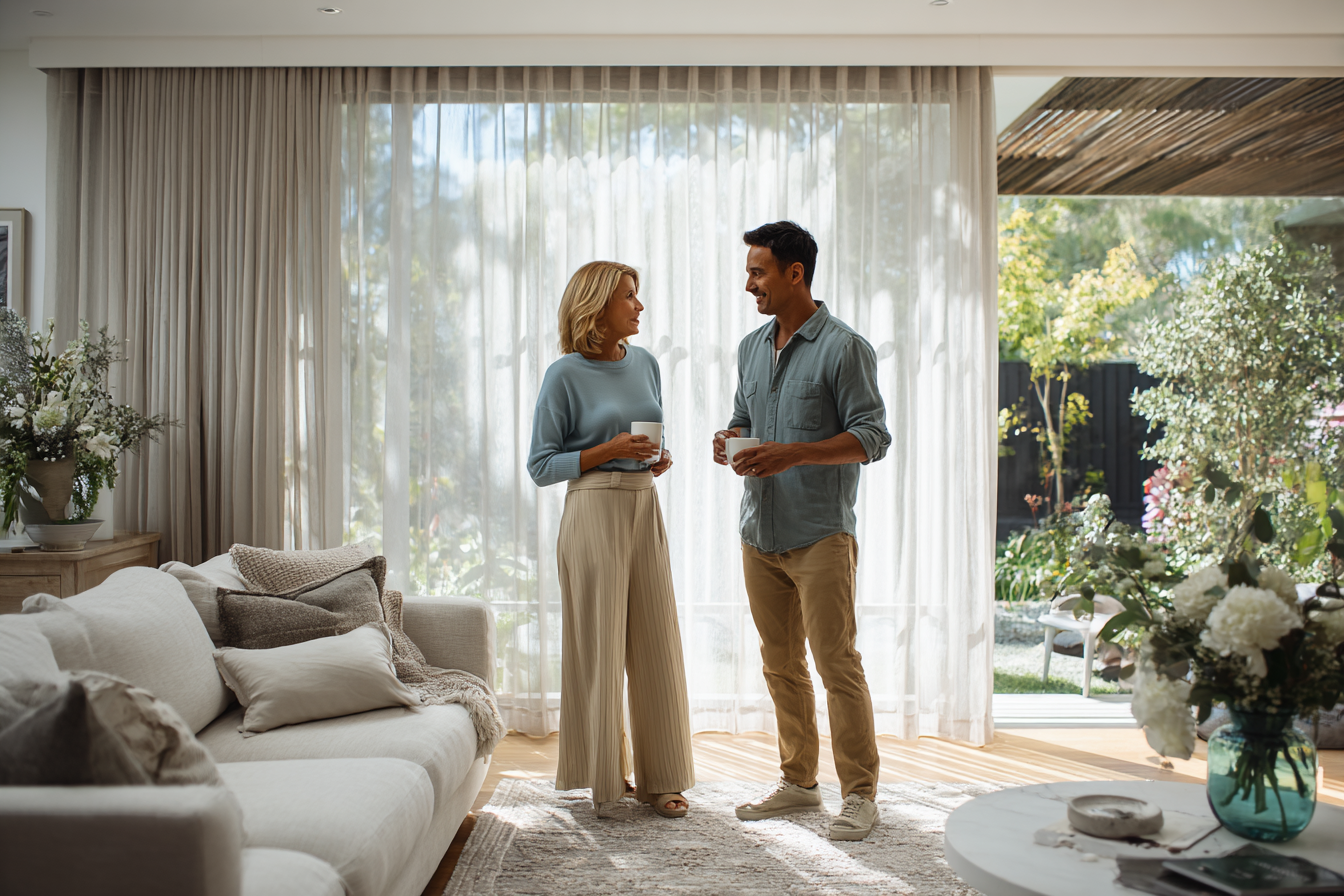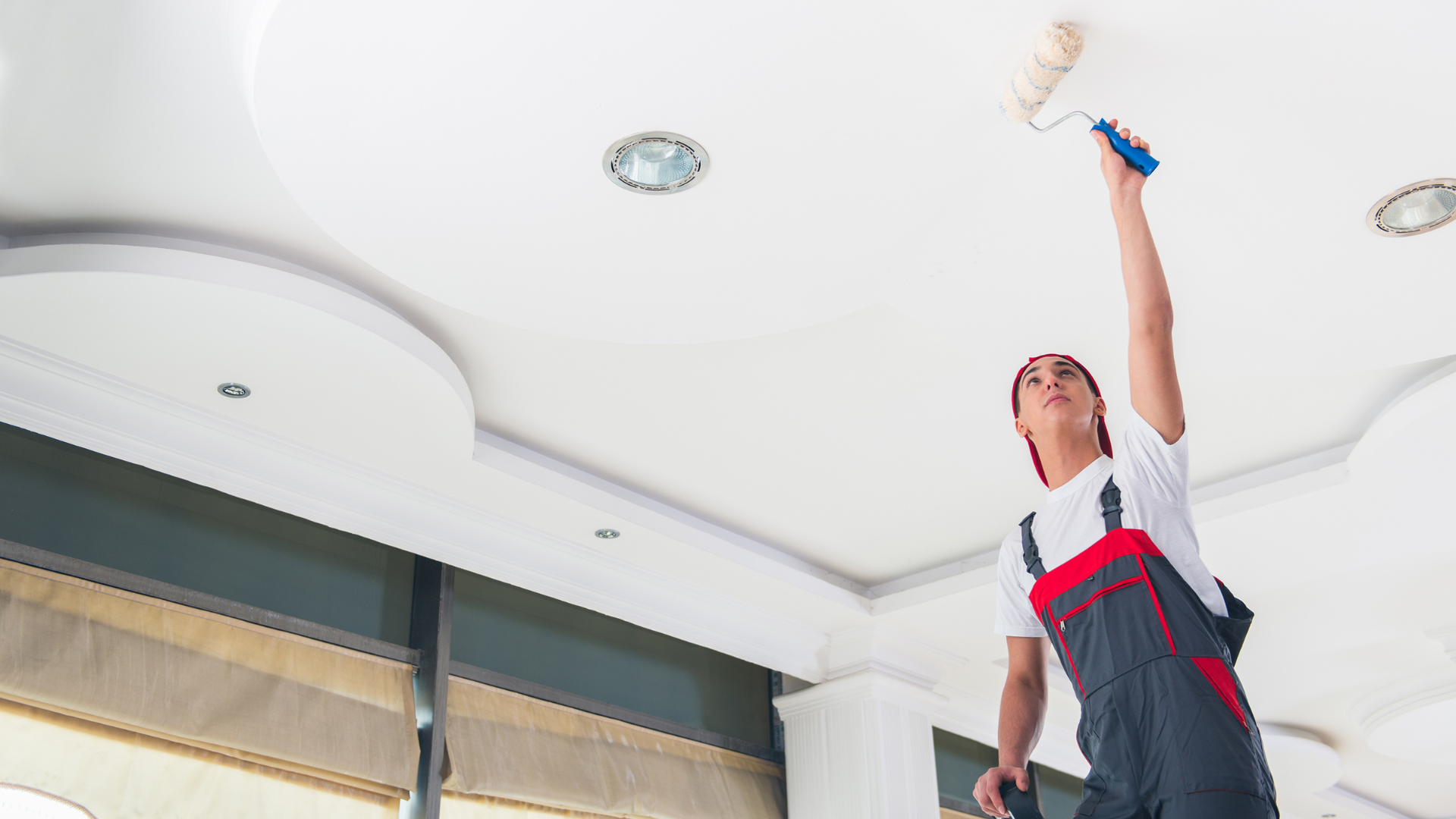Choosing The Perfect Paint Palette for Your Home

When it comes to designing a home, one of the most impactful decisions you'll make is choosing the right paint colours.
Colours have a profound effect on our mood, emotions, and the overall ambiance of a space.
Understanding the psychology of colours and how they interact with different rooms and styles is crucial in creating a harmonious and inviting environment.
The Psychology of Colours
Colour psychology explores how different hues influence human behaviour and feelings.
Each colour carries its own unique psychological properties and can evoke specific emotions:
- Red: Known for its intensity and vibrancy, red is a colour that commands attention. It’s associated with passion, energy, and excitement. Red can stimulate appetite and conversation, making it an excellent choice for dining rooms and social spaces. However, its intensity can also evoke strong emotions, so it’s best used in moderation or as an accent colour.
- Blue: Often linked with calmness and tranquility, blue is a popular choice for bedrooms and bathrooms where relaxation is key. Lighter shades of blue can create a serene, spa-like atmosphere, while deeper blues convey sophistication and elegance. Blue can also enhance focus and productivity, making it a great option for home offices.
- Yellow: Bright and cheerful, yellow symbolises happiness and optimism. It can bring warmth and energy to a room, making it a good choice for kitchens, breakfast nooks, and other spaces where you want to feel invigorated. However, too much yellow can be overwhelming and even cause anxiety, so it’s best used in moderation.
- Green: Representing nature and renewal, green is a versatile colour that promotes balance and harmony. It’s ideal for almost any room in the house, as it has a calming effect similar to blue but adds a sense of freshness and vitality. Lighter greens are perfect for living rooms and bedrooms, while deeper, earthy greens work well in home libraries or dens.
- Purple: Associated with luxury, creativity, and spirituality, purple can add a touch of sophistication to a space. Light lavender shades bring a restful, romantic feel to bedrooms, while deeper purples like plum and eggplant can create a dramatic and luxurious ambiance in living rooms or dining areas.
- Orange: Combining the energy of red and the cheerfulness of yellow, orange is a lively and stimulating colour. It’s a great choice for exercise rooms or playrooms, where energy and enthusiasm are desired. Orange can also create a welcoming atmosphere in entryways or mudrooms.
- Neutral Colours: Neutrals such as white, gray, beige, and taupe are timeless and versatile. These colours create a clean, calm backdrop and can make a room feel more spacious and light. Neutrals are ideal for any room and can be easily paired with bolder accent colours or used to highlight architectural details.
How Colours Affect Mood and Ambiance
Different colours can significantly affect the mood and ambiance of a room.
Here’s how:
- Warm Colours (Red, Orange, Yellow): These colours are stimulating and can make a room feel cozier and more inviting. They are excellent for social spaces like living rooms, dining rooms, and kitchens, where you want to encourage interaction and energy.
- Cool Colours (Blue, Green, Purple): Cool colours have a calming and relaxing effect, making them ideal for bedrooms, bathrooms, and other areas where you want to unwind. They can make a space feel more expansive and serene.
- Neutral Colours: Neutrals can serve as a blank canvas, creating a balanced and understated environment. They work well in any room, providing a versatile backdrop that can be personalised with furnishings and decor.

Tips for Selecting the Right Hues for Different Rooms
When selecting colours for your home, consider the room's function, size, lighting, and existing decor.
Here are some tips to guide you:
- Living Room:
The living room is often the heart of the home, where family and friends gather. Opt for warm, inviting colours like soft yellows, muted greens, or neutral shades. These colours encourage relaxation and conversation. If you want to make a statement, consider a bold accent wall in a deeper hue, such as navy blue or emerald green, to add depth and interest. - Kitchen:
The kitchen is a hub of activity and should feel bright and energetic. Colours like warm whites, soft grays, and light blues can create a clean, fresh look. If you prefer a more vibrant space, consider shades of yellow or green, which can stimulate appetite and add a cheerful ambiance. - Dining Room:
Dining rooms benefit from colours that promote appetite and conversation. Rich, warm tones like deep reds, burnt oranges, or golden yellows can create an intimate and cozy atmosphere. For a more modern look, consider a dark accent wall paired with lighter neutrals to create a striking contrast. - Bedroom:
Bedrooms should be a sanctuary for rest and relaxation. Soft, cool colours like pale blues, greens, or lavenders are perfect for creating a calming environment. Neutral shades like light grays or creams also work well and can be easily paired with colourful bedding or artwork for added personality. - Bathroom:
For bathrooms, consider light, airy colours like soft blues, greens, or whites to create a spa-like atmosphere. These shades evoke cleanliness and tranquility. If you want to add a touch of luxury, consider using deep navy or charcoal for a dramatic effect, balanced with light-coloured fixtures and accents. - Home Office:
In a home office, colours that enhance focus and productivity are essential. Consider blues, greens, or even purples, which can promote concentration and creativity. Neutral tones like grays and beiges can also create a calm, distraction-free workspace. - Hallways and Entryways:
These transitional spaces set the tone for the rest of your home. Opt for lighter colours to make narrow hallways feel more spacious. Consider using a bold colour or patterned wallpaper in the entryway to create a welcoming statement.
Factors to Consider When Choosing Paint Colours
Room Size:
Light colours can make a small room feel larger and more open, while dark colours can create a cozy, intimate feel in a large space. Use darker shades on accent walls or in rooms with ample natural light to avoid making them feel cramped.
Natural Light:
Natural light plays a significant role in how a colour appears. Rooms with lots of sunlight can handle cooler tones, while darker rooms may benefit from warmer, lighter colours. Always test paint samples in different lighting conditions to see how they look throughout the day.
Existing Decor and Furniture:
Consider the colour of your furniture, flooring, and decor. The paint colour should complement these elements rather than clash with them. For a cohesive look, choose colours that are already present in your decor, such as a shade from a patterned rug or artwork.
Mood and Style Preferences:
Think about the overall style and mood you want to create in your home. Do you prefer a modern, minimalist look with neutral tones, or are you drawn to vibrant, eclectic styles with bold colours? Your personal style should guide your colour choices.
Flow Between Rooms:
If you have an open floor plan, consider how the colours will flow from one room to another. Choose colours that complement each other and create a seamless transition between spaces. You can use varying shades of the same color or choose colours from the same palette for a harmonious look.
How to Test Paint Colours Before Committing
Testing paint colours is crucial to ensure you’re happy with your choice.
Here’s how to do it effectively:
- Use Paint Samples:
Most paint stores offer small sample sizes. Paint swatches on different walls to see how the colour looks in different lighting. Observe the samples at different times of the day to see how natural and artificial light affect the colour. - Try Large Swatches:
Larger swatches give a better representation of how the colour will look on a whole wall. Consider painting a piece of cardboard or poster board with the sample colour and moving it around the room. - Test with Decor:
Place the swatches near furniture, artwork, and decor to ensure they complement the existing elements in the room.
Conclusion
Choosing the perfect paint palette for your home involves more than just picking your favorite colours.
Understanding the psychology of colours, how they affect mood and ambiance, and considering the function and style of each room will help you create a space that feels comfortable and inviting. With these tips and a bit of experimentation, you can confidently choose colours that reflect your personality and enhance your home's beauty.
By carefully selecting the right hues for each room, you can transform your home into a cohesive, stylish, and welcoming space that you and your family will enjoy for years to come.





